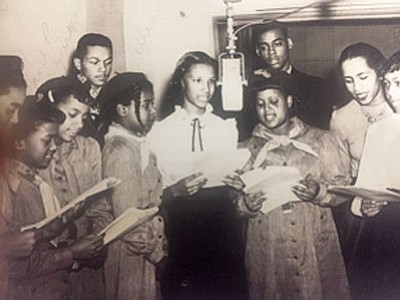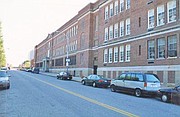BALTIMORE — Dr. Jannette L. Dates, Dean Emerita of the Howard University School of Communications and Coppin State University graduate, recalled the “good old days” when she attended the Historic Samuel Coleridge-Taylor Elementary, School #122, in Baltimore in the 1940s.
In the face of segregation, the elementary school turned out some of the country’s most sophisticated and successful teachers, doctors and many other professions.
“It was the first elementary school built specifically brand new for colored children in the City of Baltimore and one of the first in the state,” Dates said. “It’s been called a historic building because of the history, and it’s a solid and good building that has so many memories.”
Courtesy Photo
Samuel Coleridge-Taylor Elementary, School #122 was the first elementary school built specifically, brand new for colored children in the City of Baltimore and one of the first in the state. Located at 507 W. Preston Street, the school opened in 1927.
Those memories will likely be shared aplenty as Dates, alumni, educatiors. and others plan to gather to celebrate the 90th anniversary of the elementary school.
The celebration kicks off June 2, 2017 when Dates and others will go into the school and speak with students about its history. Festivities are planned at the Radisson Hotel in Baltimore on June 3, where elders and young ones alike are expected to attend.
“We are hoping to be able to pass on an understanding of our history to the young ones,” Dates said. “I think it’s important because African-American history needs to be celebrated and we need to remind each other of some of the things that we’ve done.”
Dates went on to become a teacher in the Baltimore City Public School System, a television demonstration teacher and an assistant professor at Morgan State University.
While at Morgan State University, she became the producer, writer and anchor for “North Star”, a weekly hour-long show featuring local and national African-American entertainment and sports personalities that aired on WBAL.
Later, Dates became an assistant professor at Howard University and among other jobs and appointments, she was selected in 2013 by President Barack Obama for the board of directors of the corporation for Public Broadcasting.
“All of us ended up in positions where we were all successful because we had such a great education,” Dates said.
The late and famous Supreme Court Justice Thurgood Marshall also began his education at Coleridge.
“Our 1954 class was the last in the segregated system,” Dates said.
Located at 507 W. Preston Street, the school opened in 1927.
For 59 years in Baltimore, every school building designated for African-American students was either a hand-me-down facility often in poor condition, or was in a few rooms within a church, according to a published history manual. However, School #122, a large brick three-story structure, which almost covered a city block proved different, and in 1999, received landmark designation by the city’s Commission for Historical and Architectural Preservation.
During Dates’ tenure, the school developed an enriched curriculum consistent with the theory of progressive education. The “Platoon Method” used by the principal divided the school day between homerooms and subject rooms with appropriate materials taught by subject area specialists.
The physical education teacher designed the field behind the school as an obstacle course on which classes demonstrated high levels of performance in a variety of physical activities that culminated with an annual wrapping of the Maypole.
The marching band was led by the city’s first black majorette of the 1940s, and following World War II, the school included the Baby Boom generation. Later, during the 1960s, children were bused in.
“We were so lucky to have such an outstanding education at that school for a couple of reasons,” Dates said. “The teachers we had were great teachers and they couldn’t go anywhere else because of segregation, so we got them and they were the best in their field.”
The students also enjoyed a top-notch musician who taught music; a historian who taught history and civics; and other specialized instructors.
According to Dates, the principal was highly intelligent and effectively ran the school like a military platoon.
“We had a wonderful experience,” Dates said. “We were so prepared for junior high school and high school, and many of us went on to Coppin State, Morgan State, and Howard universities. We had a great education and it was all because of School 122.”

